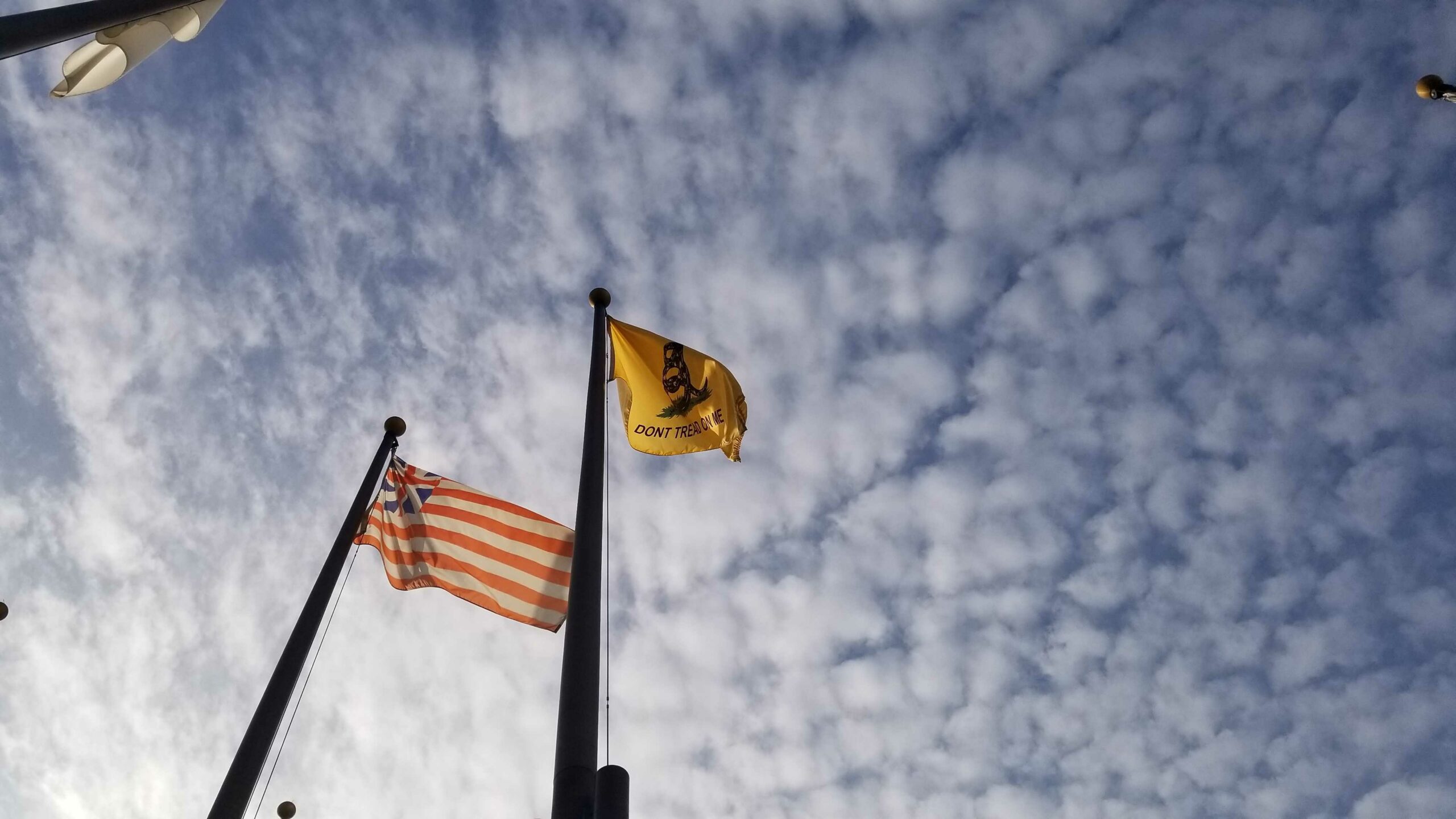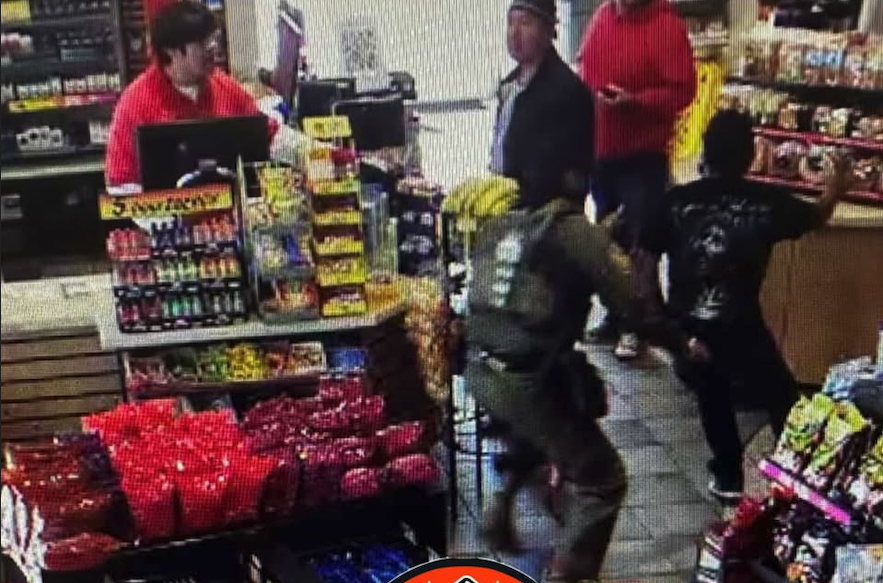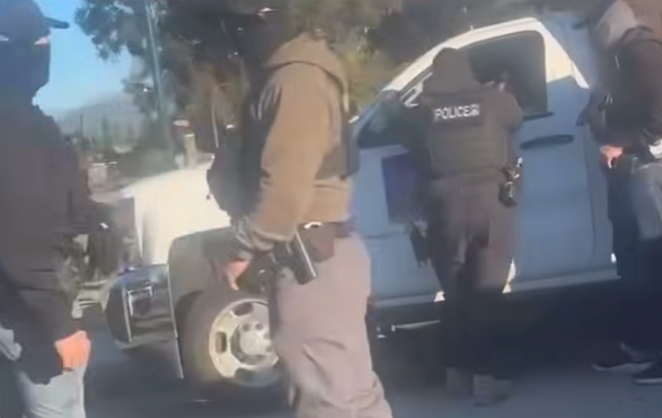Update on 3/23/22: A spokesperson for the Music Center, the organization that manages Grand Park, tells L.A. TACO that the Gadsden Flag has been permanently removed from Grand Park at the direction of the county.
About a block away from Los Angeles City Hall, the Gadsden Flag, a polarizing symbol synonymous with far-right extremism and militias, flies proudly in Grand Park, a county-run public space in the middle of DTLA; ironically called “the park for everyone.”
Although the Gadsden Flag was once a symbol of the American Revolution, the bright yellow banner with a rattlesnake at its center above the words “Don’t Tread On Me” has recently been appropriated by members of far-right extremist groups like the proud boys. Over the past couple of years especially, the Gadsden Flag has flown prominently at anti-mask mandate and post-election protests.
Rosanne Boyland, a Qanon supporter, famously trampled to death while storming the capital on January 6, was seen earlier in the day clutching a Gadsden Flag attached to a pole, as were dozens of other attendees.
Uh, has there always been a Don't Tread on Me flag flying in Grand Park? pic.twitter.com/waX38m1qeC
— Rabi Abonour (@rabonour) October 26, 2017
Although the flag was installed decades ago in what was then the Civic Center, long before Grand Park was Grand Park, the commandeering of the Gadsden Flag by far-right extremist groups has reframed its legacy. Adding to that, Grand Park and nearby locations have been the sites of tense protests since the pandemic started.
Following the murder of George Floyd, dozens of people camped out at Grand Park in protest of police violence. A section of the park was closed months later after sheriff’s deputies fatally shot a man in South L.A.
And more recently, in August, a neighboring park near city hall became a rallying point for far-right extremists protesting vaccine mandates. The protest turned violent when anti-vaccine protesters and counter-protesters clashed, resulting in two people being stabbed.
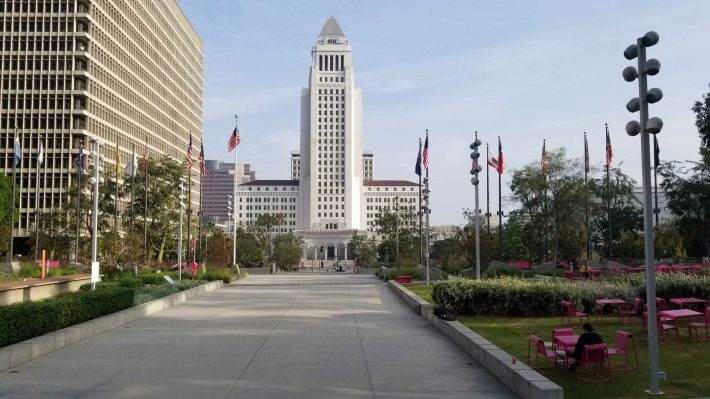
Ana M., an L.A. TACO reader and lifelong resident of Los Angeles, first noticed the bright yellow flag while driving up Hill Street on her way to work and brought it to our attention. “I know it sounds silly, but I literally thought that maybe protestors put it up. Like, I was in shock,” Ana said during a recent phone interview. She declined to give her last name out of fear of law enforcement targeting her.
Ana says she’s familiar with the flag’s history but was surprised to see it flying in a public park in Los Angeles. “The only people I see flying that flag [now] are like, you know...they’re not even like conservatives, they’re libertarians.”
There have been many iterations of the Gadsden Flag over the hundreds of years that it’s been in existence. Columnist Rob Walker, with the New Yorker, described early rattlesnake symbolism as “something of a Colonial-era meme, evidently originated by Benjamin Franklin.”
Since being adopted by early colonists, the Gadsden Flag has been used by the US Navy, soccer teams, and, more recently, far-right extremist groups and militias. As groups like the Oath Keeps, Proud Boys, and Qanon have seeped deeper into our society, the Gadsden Flag has gone from a symbol of American freedom to a symbol of anti-government movements and some instances, racism.
Franklin’s OG woodcut illustration was slightly different from the design that most people recognize today. According to historians, it depicted a segmented rattlesnake over the words “JOIN, or DIE” and was intended to be a satirical rallying call to colonists. Several local newspapers republished the piece, making it arguably one of the earliest American political illustrations.
Years later, in 1775, Christopher Gadsden, a South Carolina slave trader and army colonel, remixed Franklin’s design, coiling the snake and adding the now infamous “Don’t Tread on Me” slogan. Gadsden’s rendition was used by continental sailors and has since become the most prominent version of any rattlesnake flag.
Despite Gadsden’s ties to slavery, early iterations of flags featuring rattlesnakes are primarily thought to be pro-colonies and anti-British. “It is clear that the Gadsden Flag originated in the Revolutionary War in a non-racial context,” writer and historian Marc Leepson told the New Yorker.
Since being adopted by early colonists, the Gadsden Flag has been used by the US Navy, soccer teams, and, more recently, far-right extremist groups and militias. As groups like the Oath Keeps, Proud Boys, and Qanon have seeped deeper into our society, the Gadsden Flag has gone from a symbol of American freedom to a symbol of anti-government movements and some instances, racism.
In recent years, similar monuments and symbols of our past have been questioned.
Last summer, during the peak of racial justice protests, indigenous community members organized a secret action to dismantle a polarizing statue of Catholic priest Junípero Serra, the architect of California’s mission system. Last month, Mayor Garcetti announced plans to rename the statue’s park.
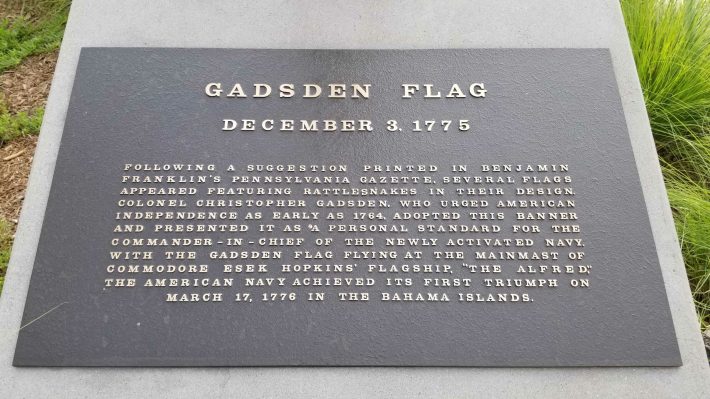
There have also been calls to rename Fletcher Bowren Center, a small park just steps away from Grand Park, known for its iconic brick-layered skate spots. The park is named after Fletcher Bowron, the city’s second-longest-serving mayor. He infamously pushed for Japanese-Americans living in Southern California to be put to work in internment camps in the central valley during World War II.
Kevin de Leon, a candidate for mayor and current city council member representing the district that includes Fletcher Bowren Center as well as Grand Park, told L.A. TACO in a statement: "The actions and comments of then-Mayor Fletcher Bowron fueled the unconstitutional displacement of Japanese-Americans and has been an episode in our history from which we're still trying to heal. I welcome any conversation that aims to help us confront our painful past and restore justice for those who were victims of prejudice and racism." Although Grand Park is also in the council member’s district, the county has control over it.
Ana, the L.A. resident who works in DTLA, doesn’t necessarily think the flag has to come down. “I'm not like a take down those monuments kind of person...I think that there should be a more transparent explanation as to why it’s there.”
“And maybe it should be taken down because we have a lot of like, really far-right rallies in our cities, and maybe it’s emboldening them. I don’t really know. But I feel like people should have transparency around their public parks.” Ana says that she made attempts to find out more about the flag. “I just never heard back,” she told us.
A spokesperson for Supervisor Hilda L. Solis, the L.A. County supervisor representing the district that includes Grand Park, did not respond to L.A. TACO after multiple requests for comment.
Reached via email late last month, a spokesperson for The Music Center, the non-profit organization that manages Grand Park as well as the Walt Disney Concert Hall, told L.A. TACO: “Thank you for reaching out about the flag, which is part of the Court of Flags in the park. These flags date back to the 1960s and pre-date the establishment of Grand Park. We appreciate your bringing this to our attention. We are in touch with the County and the issues you raised about the flag.” A few days later, another spokesperson for The Music Center told us, “We are in touch with the County and were told they are investigating the origin of the flag and the process of determining how to address it.”
